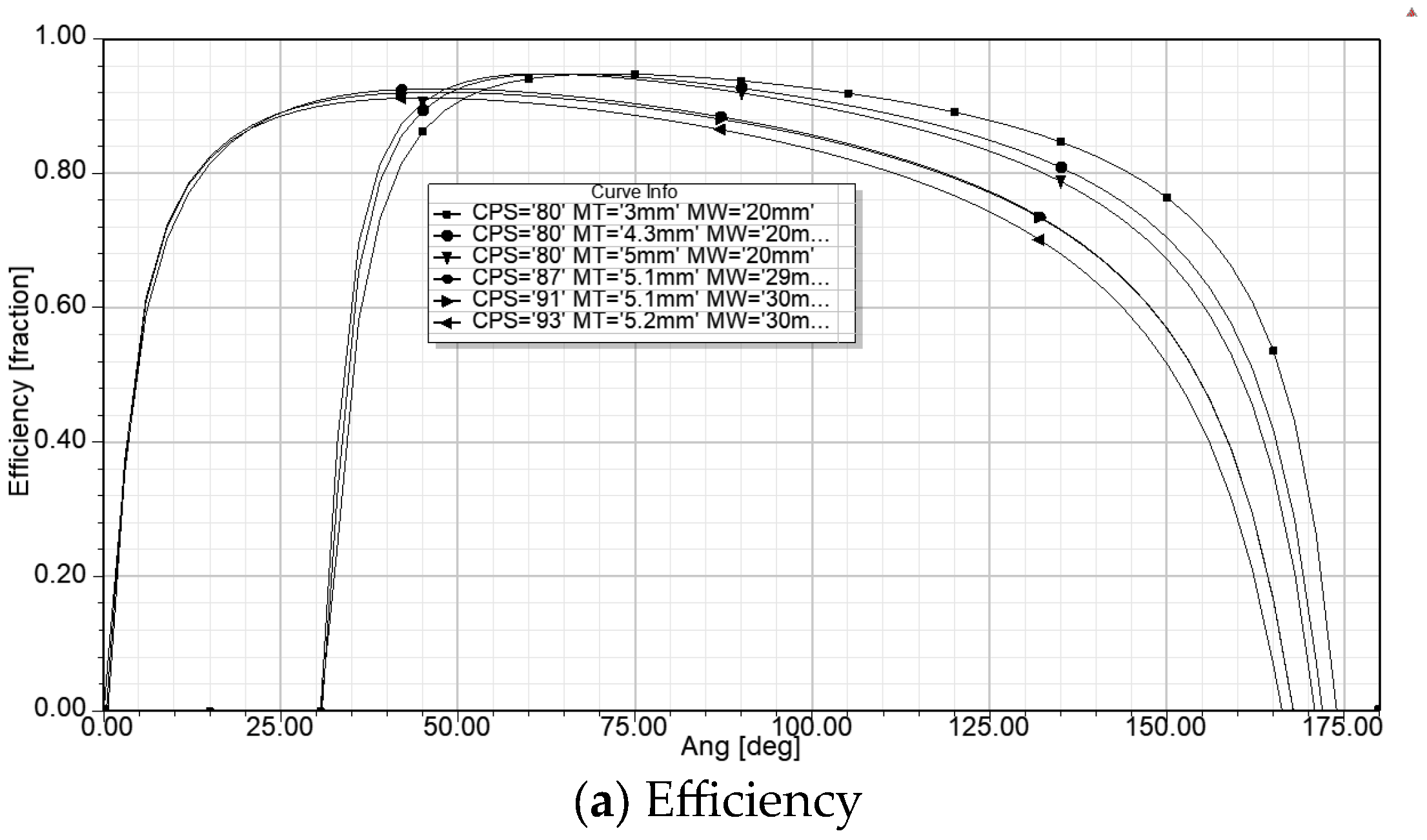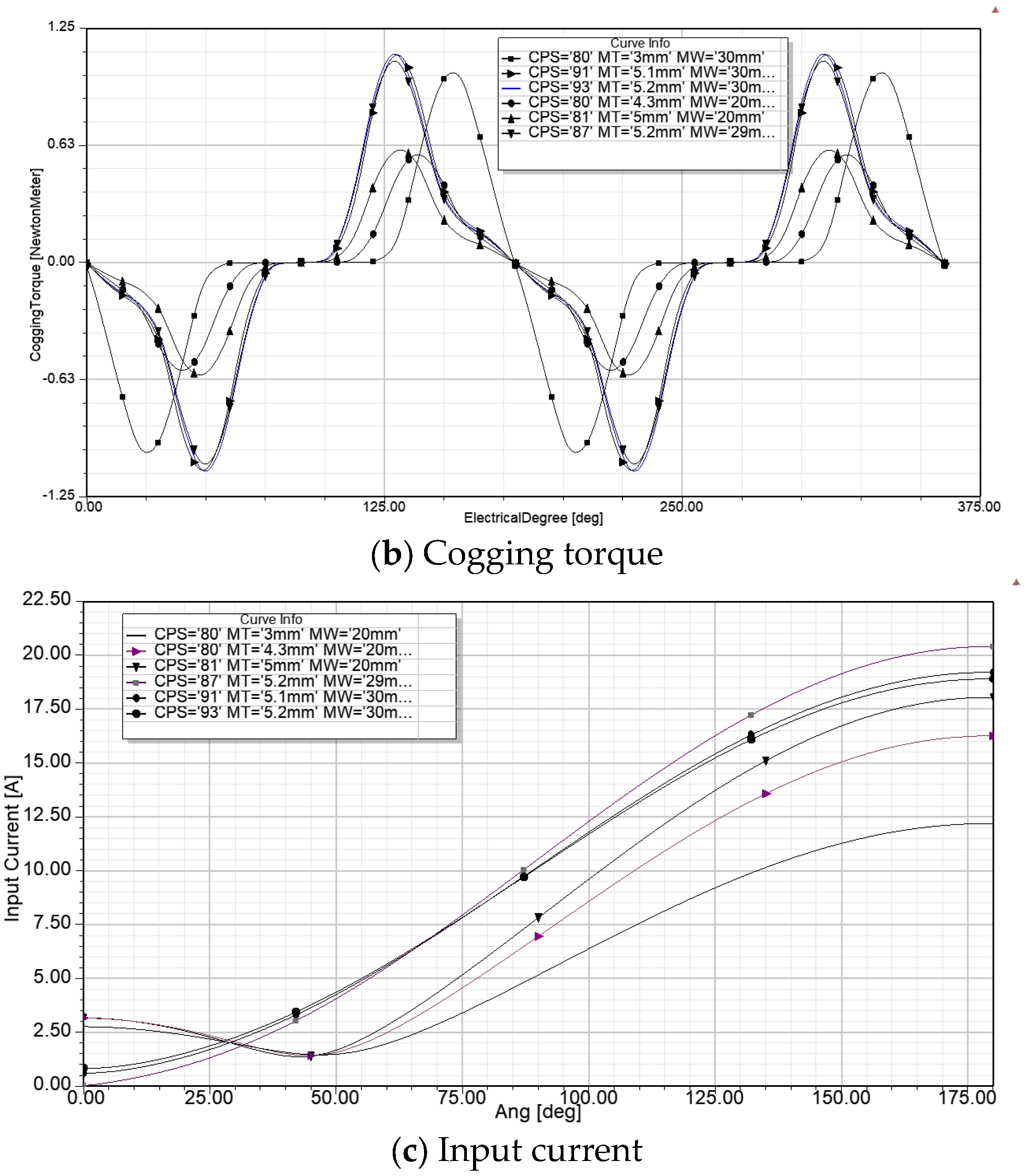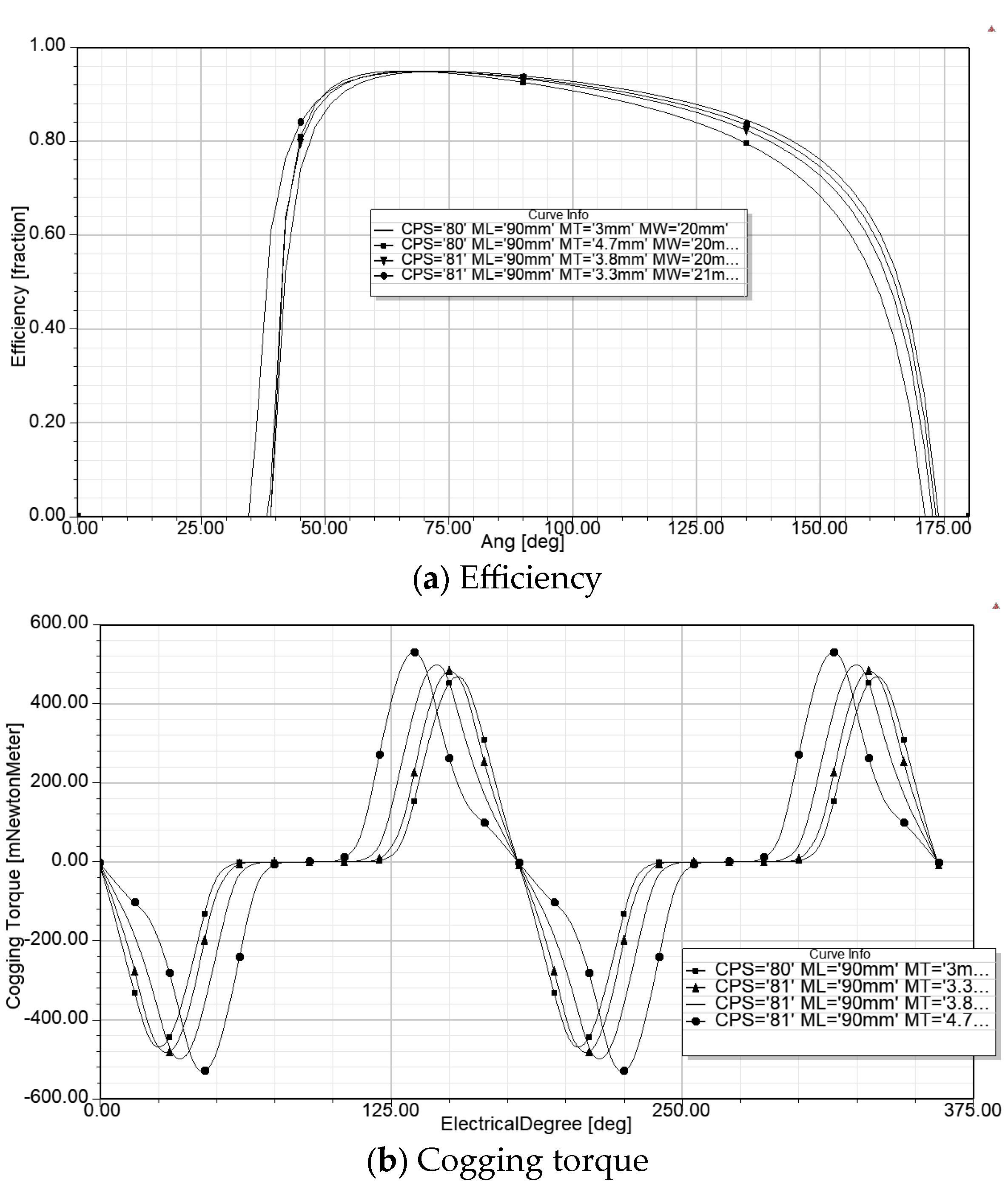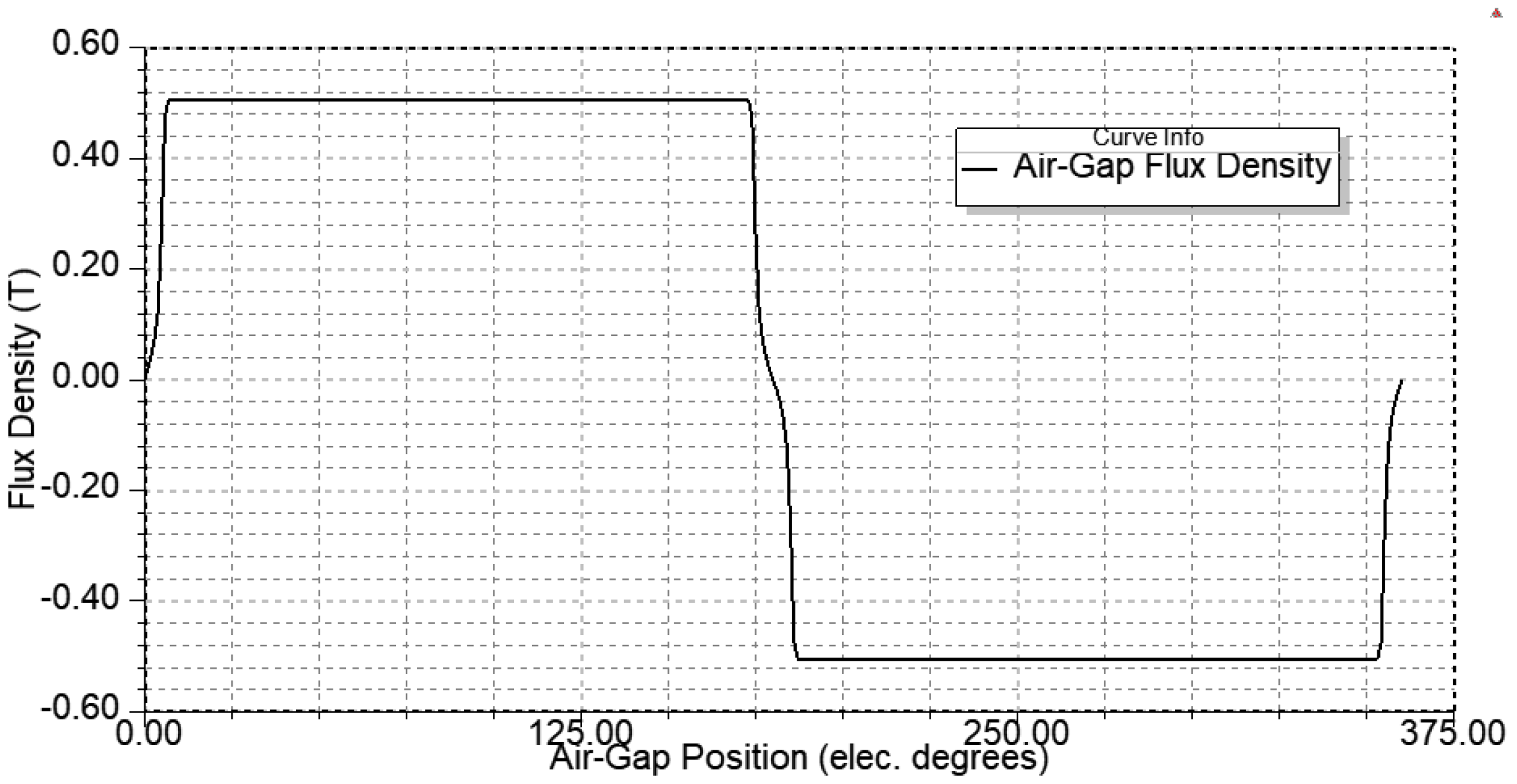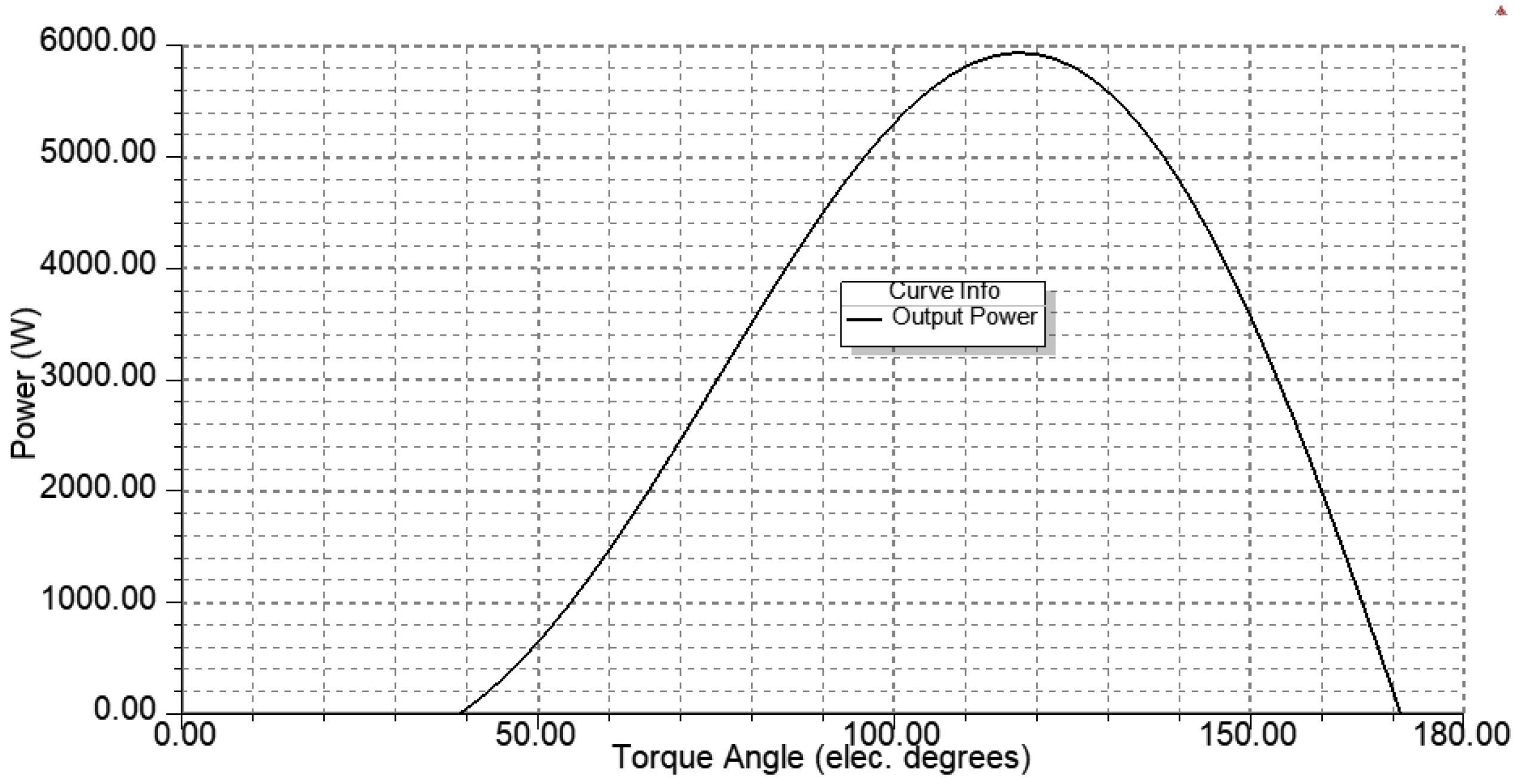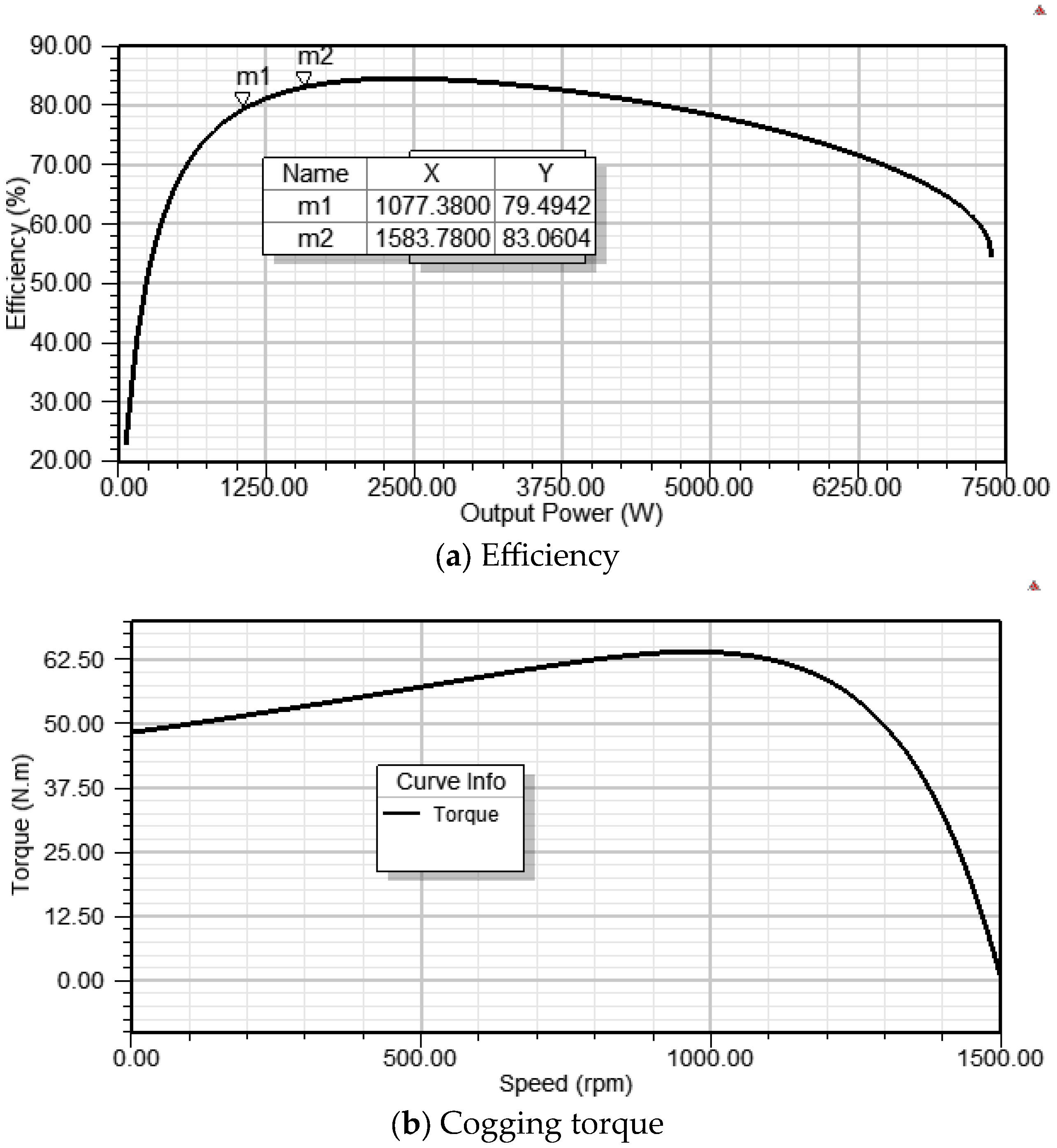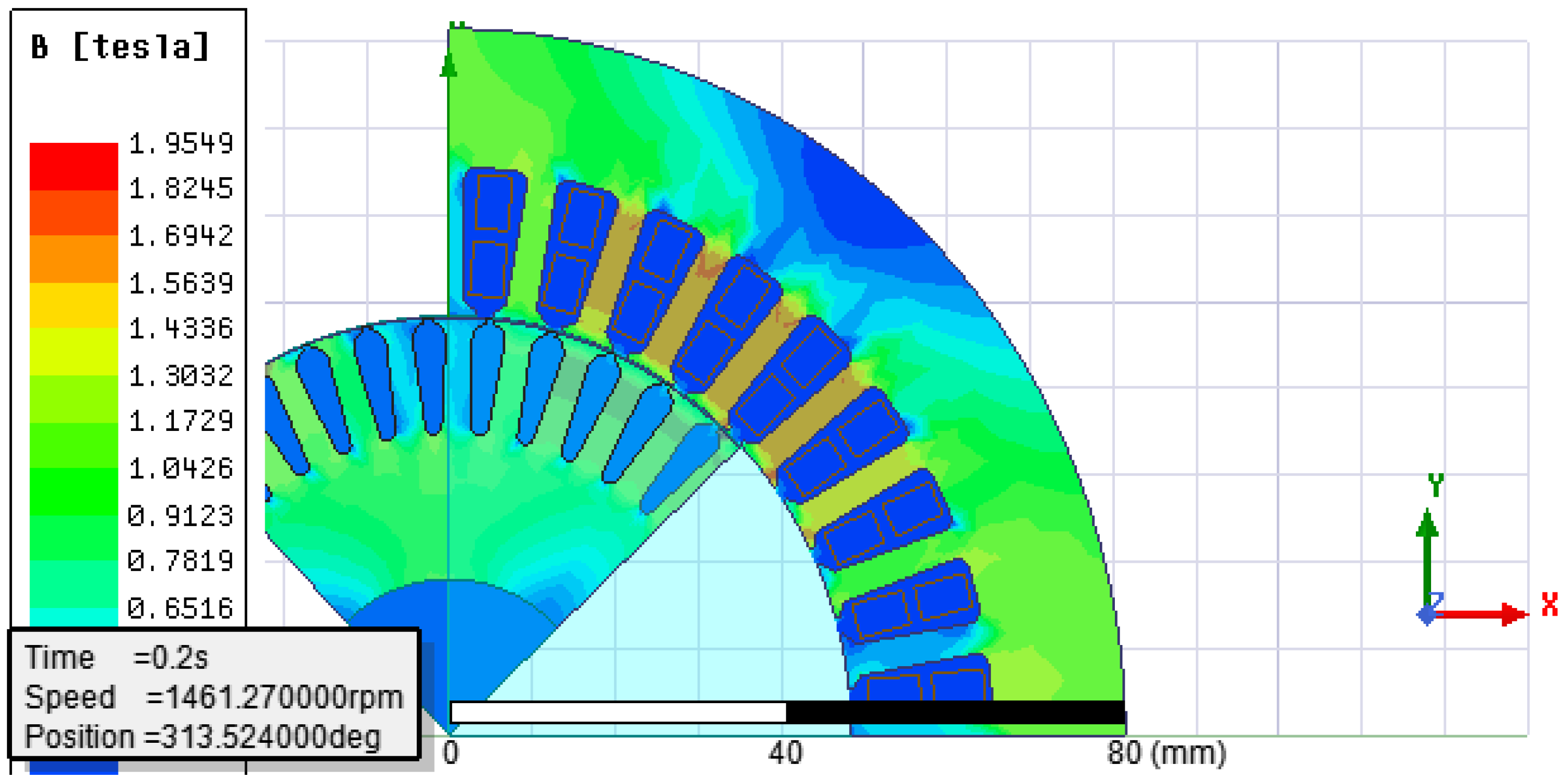The spoke-type synchronous permanent magnet motor is well known for its flux concentration properties, which enable the use of ferrite magnets by generating higher flux densities in the air gap and achieving greater torque density. Unlike rare earth magnets, ferrite magnets are inexpensive and widely available but have significantly lower remanence (Br), coercivity (Hc), and energy product (BHmax) compared to rare earth magnets. The research in [
2] found that the type of stator winding, along with the use of ferrite magnets, has a significant impact on motor performance. In particular, a high number of stator turns are required in a permanent magnet synchronous motor (PMSM) with ferrite magnets to achieve optimal performance [
2]. The position of the magnets in the rotor also significantly affects motor performance. In [
3], two different rotor topologies—one with surface-mounted magnets and the other with embedded magnets—are analyzed. The study found that for electric vehicle compressors, the motor with surface-mounted magnets offers higher efficiency compared to the motor with embedded magnets. However, the motor with embedded magnets requires less permanent magnet material, making it more resource efficient. The impact of various geometric parameters, such as magnet dimensions, machine diameter, stator tooth height, and the number of poles, has been analyzed to compare overall torque, power, and torque ripple. This analysis helps identify the optimal design parameters and their respective ranges [
4]. Additionally, the influence of mechanical design on motor operation and the reduction in mechanical stress is examined in [
5,
6]. Furthermore, the analogy between the electrical equivalents of mechanical equations is established, and the mechanical parameters of a PMSM are expressed as electrical circuit elements in [
7]. The performance of an interior permanent magnet synchronous motor (IPMSM) can be optimized by considering multiple operating parameters—such as high efficiency, low cogging torque, and low harmonic content—as a multi-objective optimization problem, aided by genetic algorithms [
8]. A parametric analysis, involving variations in stator slot dimensions and magnet sizes, has been conducted for an IPMSM with V-shaped magnets embedded in the rotor, aiming to enhance efficiency and reduce material consumption [
9]. High temperatures hinder optimal motor performance in high-speed applications. The optimization of the cooling system, designed to reduce the maximum temperature of an IPMSM, is presented in [
10]. This system consists of heat pipes, aluminum fins, and potting material installed in the end winding. Several studies have explored efficiency optimization for IPMSMs using different approaches. In [
11], one approach assumes that variations in the q-component of the stator current have a negligible effect on the stator flux. Based on this assumption, IPMSM losses are categorized into load-dependent and load-independent losses. By properly balancing these losses—ensuring they are equal in a steady state—total losses are minimized, leading to improved efficiency. The minimization of iron losses through the design of magnets, slot geometry, and the number of poles is presented in [
12], while the impact of magnet type on motor efficiency is discussed in [
13]. The loss and efficiency characteristics of the surface permanent magnet synchronous motor (SPMSM) and IPMSM machines are comprehensively compared in [
14], especially considering the driving cycle for the EV. According to [
14], an IPMSM with V-type rare-earth magnets embedded in the rotor exhibits superior overload and torque capability while achieving the highest driving cycle efficiency. Apart from efficiency, smooth motor operation at various speeds is equally important, especially in low-speed applications. Cogging torque, also known as “no-current” or detent torque, arises from the interaction between the motor’s permanent magnets and stator slots. At high speeds, its effect diminishes due to the motor’s moment of inertia. However, in the operation of synchronous motors, cogging torque and its effects are undesirable. In [
15], it was found that rotor configuration significantly impacts flux density distribution, affecting both the magnitude and frequency of torque ripple. According to [
15], configurations with embedded magnets exhibit higher torque ripple, which can lead to increased noise and vibrations. In contrast, motors with inset magnets demonstrate lower vibrations and smoother torque output. The effect of cogging torque is more pronounced in two-phase PMSMs. As demonstrated in [
16], cogging torque depends on the dimensions and geometry of the magnet placement in two-phase synchronous motors. The reduction in cogging torque, as demonstrated in [
17], can be achieved through techniques such as tapering skew angles, inserting asymmetric air holes, and adding steel plates into barriers and bridges for IPMSMs with V-shaped magnets. Unlike the frequently analyzed IPMSM with embedded V-shaped magnets, the spoke-type IPMSM has not been as thoroughly explored. Only a few publications address issues such as efficiency optimization, cogging torque reduction, or permanent magnet reduction in spoke-type IPMSMs. The spoke-type IPMSM offers good flux-weakening capability and high-power density. It enhances the utilization of ferrite magnets, although their commercial application is limited due to low remanent magnetization and relatively lower intrinsic coercivity. The spoke-type permanent magnet topology enables magnetic flux concentration in the rotor, resulting in higher magnetic flux density in the air gap and increased torque density [
18]. Three cogging torque reduction techniques for spoke-type IPMSMs were implemented in [
19]: rotor skewing, notching, and pole pairing. The first two techniques lead to more complex designs and higher production costs. The mechanical strength of spoke-type permanent magnet rotors can be improved by wedges and flux barriers along with improvements in air gap flux density waveform, back EMF waveform, and output torque [
20]. The design of the spoke-type synchronous motor with ferrite magnets and concentrated winding can be improved by the modification of the rotor into a flared-shape structure with several C-shaped ferrite magnets arranged in a flared shape in the rotor. The flared-shape structure of the ferrite magnets maximizes the utilization of the ferrite magnets in the rotor core but also improves efficiency and reduces the cogging torque [
21]. The use of ferrite magnets and their potential to reduce rare-earth magnets by modifying rotor design and adding permanent magnets to the ferrite magnets in the hybrid structure was analyzed in [
22]. The application of a spoke-type synchronous generator for driving low-capacity wind turbines was explored in [
23], where an asymmetric rotor barrier design was proposed to reduce cogging torque. This paper addresses several design parameters and operating characteristics of the spoke-type synchronous motor with rare-earth magnets, including efficiency, cogging torque, and magnet weight. The goal is to achieve high efficiency, low cogging torque, reduced magnet mass, and good overloading capability, ultimately increasing the maximum output power. This is achieved through simple modifications to the motor design, such as selecting the optimal combination of magnet length and width, motor length, and the number of conductors per slot. The paper illustrates that through these simple design modifications to the synchronous motor, significant improvements can be achieved in terms of operating efficiency and reduced cogging torque, along with a decrease in the mass of rare-earth permanent magnets, ultimately contributing to lower production costs.

